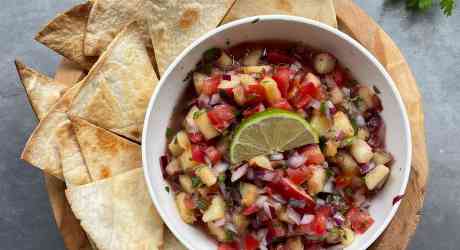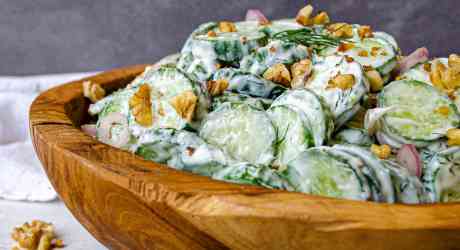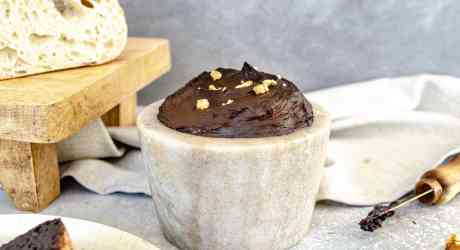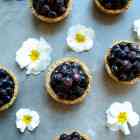Pumpkin Pasta

Who doesn’t love to dig into a heaping bowl of pasta? I know that I personally really really enjoy it, as do a lot of our clients. But is pasta really the best brain food? The answer is: It depends.
The thing is, most pasta on the market is made using white flour that has been heavily processed and refined so it is devoid of brain (and gut) loving fibre and healthy fats, not to mention vitamins and minerals.
But the good news is, we can very easily change that.
We simply added pumpkin puree and pumpkin seeds to give basic pasta a serious glow-up. Pumpkin is high in water content, coming in at a whopping 92% water (have you heard about dehydration as a leading cause of brain and mental health symptoms?). It is also full of fibre, including special prebiotic fibres that are the favourite food of our happy, healthy gut bugs who fuel our gut-brain axis. Moreover, pumpkin is high in the amino acid tryptophan, which builds serotonin and melatonin, magnesium, which I lovingly call our anti-anxiety mineral, and lutein, a brain-boosting carotenoid (aka. colourful plant compound). And pumpkin seeds? Well, they bring with them a ton of our brain’s favourite fats, omega-3’s, as well as more fibre, magnesium, and antioxidant (ie. free-radical fighting) compounds. Not bad for a bowl of pasta, right?
You can add your favourite sauce, or if you want to stay on the pumpkin theme try our pumpkin seed pesto. We made our pasta into photogenic little pumpkins perfect for Thanksgiving, but have also made homemade ravioli and fettuccine with our recipe. So feel free to get creative with how you want this elevated pasta to look.

- 1.5 cups organic all-purpose flour, plus more for kneading and dusting
- 7 oz organic pumpkin puree (canned or homemade)
- 70-75 organic pumpkin seeds (shelled, raw)
- 1-2 tsp sea salt
- 1/2 cup organic pesto* or pasta sauce of choice
- In a large bowl, or directly on a clean counter, add the flour with pumpkin puree on top. Using a spoon or your hands, start to mix together, using your hands to knead until you have a smooth dough. If all flour is incorporated but the dough is still sticky, continue kneading in little bits of flour at a time until no longer sticky and flour is fully incorporated.
- Taking a 1 tsp measuring spoon, measure out slightly less than 1 tsp of dough, and roll it into a smooth ball. Using a toothpick, gently indent the sides and top of the dough to form the pumpkin. Push a pumpkin seed in the middle, dust with flour and set aside.
- When ready to cook, bring a large pot of water to a rolling boil, add the salt and once boiling, turn down slightly. It's important that the water is still boiling, but bubbles are small enough that you can see when the pasta floats to the top and stays there. Depending on how large your pot is, cooking in batches of 10-15 pumpkins at a time is best. Give them a quick stir once in the water to make sure they don’t stick to the bottom of the pan. Once they float to the top, they are typically done after about 15-30 seconds**.
- When done, remove from pot using a small pasta strainer, shake most of the water off, and add to a bowl with a bit of pesto or pasta sauce of choice. Make sure your water is still boiling (turning it up for a moment if you need to) and move on to the next batch.
*Want to stay on the pumpkin theme and make your own pumpkin seed pesto? Try ours, here!
**Double check one before you remove them all. Remove one and cut open to make sure it is cooked to your liking, and the same texture all the way through.
Use this recipe to make other types of pasta! I've successfully used it to make homemade ravioli, as well as fettuccine.
Cooked pasta in pasta sauce should be stored in an airtight container in the fridge for 3-5 days. Uncooked pasta can be stored in an airtight container in the fridge for 5-7 days and cooked as per above instructions.

Pumpkin:
- Pumpkin polysaccharides (carbohydrates) have been found to have hypolipidaemic (fat lowering) and hypoglycaemic (blood sugar lowering) activities in the bloodstream.
- Recent studies have shown promising results in using pumpkin polysaccharides as a form of treatment in diabetes mellitus.
Pumpkin Seeds:
- Shown to exhibit both anxiolytic (anti-anxiety) and antidepressant effects with memory improvement in animal models of anxiety and depression as well as an increase in the neurotransmitter norepinephrine (possibly explaining their antidepressant effect).
- References
-
- Song, H., Sun, Z. (2017). Hypolipidaemic and hypoglycaemic properties of pumpkin polysaccharides. 3 Biotech, 7(3):159.
- Wahid, S., Alqahtani, A., Khan, R. A. 2023. Cucurbita maxima Seeds Reduce Anxiety and Depression and Improve Memory. Behav Neurol, 2023:1 - 14.
- Wang, S., Lu, A., Zhang, L., Shen, M., Xu, T., Zhan, W., Jin, H., Zhang, Y., Wang, W. 2017. Extraction and purification of pumpkin polysaccharides and their hypoglycemic effect. Int J Biol Macromol, 98:182-187.










